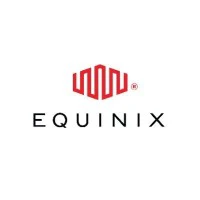NASDAQ:EQIX
Equinix Stock Price (Quote)
$744.11
-19.94 (-2.61%)
At Close: Apr 15, 2024
| Range | Low Price | High Price | Comment |
|---|---|---|---|
| 30 days | $740.95 | $861.98 | Monday, 15th Apr 2024 EQIX stock ended at $744.11. This is 2.61% less than the trading day before Friday, 12th Apr 2024. During the day the stock fluctuated 3.76% from a day low at $740.95 to a day high of $768.83. |
| 90 days | $740.95 | $914.93 | |
| 52 weeks | $672.88 | $914.93 |
| Date | Open | High | Low | Close | Volume |
| 2024-04-15 | $761.15 | $768.83 | $740.95 | $744.11 | 574 590 |
| 2024-04-12 | $765.18 | $770.53 | $759.34 | $764.05 | 496 454 |
| 2024-04-11 | $779.38 | $779.98 | $770.16 | $773.82 | 531 545 |
| 2024-04-10 | $782.66 | $786.87 | $772.14 | $775.97 | 747 075 |
| 2024-04-09 | $794.00 | $801.92 | $786.13 | $801.24 | 578 113 |
| 2024-04-08 | $783.27 | $789.73 | $782.00 | $788.19 | 607 541 |
| 2024-04-05 | $781.59 | $789.91 | $780.07 | $784.41 | 445 484 |
| 2024-04-04 | $788.91 | $795.67 | $778.65 | $781.04 | 469 196 |
| 2024-04-03 | $790.55 | $798.09 | $785.28 | $788.91 | 425 136 |
| 2024-04-02 | $793.99 | $797.91 | $788.65 | $792.67 | 551 350 |
| 2024-04-01 | $826.00 | $826.86 | $797.72 | $800.05 | 658 737 |
| 2024-03-28 | $818.87 | $827.43 | $813.00 | $825.33 | 779 556 |
| 2024-03-27 | $809.10 | $816.96 | $801.19 | $815.31 | 944 678 |
| 2024-03-26 | $792.32 | $805.55 | $792.32 | $800.07 | 930 307 |
| 2024-03-25 | $785.16 | $806.54 | $785.16 | $792.52 | 1 322 698 |
| 2024-03-22 | $807.21 | $809.22 | $798.93 | $800.97 | 1 079 331 |
| 2024-03-21 | $825.00 | $825.00 | $804.83 | $811.64 | 1 214 666 |
| 2024-03-20 | $804.88 | $836.39 | $796.90 | $824.88 | 2 352 287 |
| 2024-03-19 | $859.07 | $859.07 | $841.00 | $844.58 | 841 158 |
| 2024-03-18 | $860.10 | $861.98 | $853.15 | $860.65 | 462 310 |
| 2024-03-15 | $860.99 | $865.20 | $848.16 | $850.39 | 1 083 391 |
| 2024-03-14 | $865.77 | $870.63 | $850.02 | $864.72 | 676 718 |
| 2024-03-13 | $883.50 | $885.41 | $865.58 | $867.23 | 805 914 |
| 2024-03-12 | $893.56 | $900.40 | $888.21 | $892.81 | 382 961 |
| 2024-03-11 | $905.31 | $907.02 | $883.78 | $893.56 | 359 079 |

